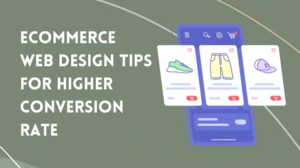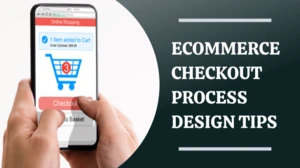Omnichannel vs Multichannel: What Are the Differences?
It's very common to mix them up; we often use the terms omnichannel and multichannel interchangeably.
But there is a huge difference between the two that can end up affecting how your customers experience your brand.
Think about this: while shopping online, you see a pair of sneakers, click the link to visit their website to learn more and then later walk into their shop to try them on. If you see that the store has no idea of what you looked at online, consider it multichannel.
But if you find that the assistant already knows what you liked, and you even get a reminder email later with a discount on the same jacket you looked at, this is what you can call omnichannel.
Here, in this article, we will break down the differences in simple terms so that you can decide on the approach that works best for your business.
What is omnichannel marketing?
This marketing strategy keeps full focus on delivering a personalised and consistent experience to customers across all channels and devices. It integrates all platforms, be it email, mobile apps, website or social media, into a single and cohesive system. All the customer data is shared across platforms to deliver the right message at the right time, depending on user behaviour and preferences.
Here are some common examples,
An airline that provides everything from app alerts to email confirmations to mobile boarding passes, where all the data automatically syncs to the traveller's profile. Another example can be a brand that lets customers browse online, contact via live chat and later follow up via email or phone, accessing the entire interaction history and continuing the conversation without asking the customer to repeat themselves.
What are the benefits?
- It creates a smooth and consistent experience across all platforms.
- It ensures a consistent brand experience while strengthening your brand recognition and engagement.
- Your business will benefit from higher conversion rates as your customers will feel understood and supported across each step of their journey.
- It allows businesses to analyse customer behaviour in a holistic way.
What is multichannel marketing?
Just as the word 'multi' suggests, multichannel marketing refers to using multiple platforms, from email to social media to print ads to physical stores, to reach and interact with customers. Here, each of the platforms runs on its own.
There might be little or no connection between them. So, customers can find different messages depending on where they interact with the businesses.
Here are some common examples,
A clothing store that uses both email marketing and a website to send out offers and messages to the customers depending on where they interact, or a business that shares product photos on Instagram, runs Google Ads and sends SMS offers, but none of these campaigns are connected or follow the same customer data.
What are the benefits?
- You can reach a wider range of audiences and present to those channels where your customers are more active.
- You can experiment with your businesses and optimise each channel individually without needing everything to sync.
- It is more accessible and does not need investing in advanced integrations or automation tools.
- It is less technically demanding and more cost-effective.
Key differences between omnichannel and multichannel marketing
Here is a side-by-side comparison between omnichannel and multichannel marketing that illustrates the core distinction.
| Feature | Omnichannel marketing | Multichannel marketing |
| Channel interaction | High. All the channels are connected. | Low. Channels work separately |
| Customer experience | Provide personalised experience | It can lack consistency |
| Strategy focus | Customer-centric | Channel-centric |
| Data sharing | Unified | Siloed |
| Technology stack | Integrated platforms like CRM and automated tools | Basic tools |
| Analytics and insights | Holistic view of customer behaviour | Limited to individual channels |
- As all the channels are connected in omnichannel marketing, customers can switch between platforms without losing any context. But in multichannel marketing, each one operates independently.
- In omnichannel marketing, businesses can send tailored messages, offers and support to customers depending on real-time behaviour and preferences. At the same time, the experience may feel inconsistent in multichannel.
- The strategy of omnichannel marketing completely revolves around the customer journey, as every decision is made considering customer experience in mind. But in multichannel, the focus remains on optimising each individual channel.
- Omnichannel marketing relies on platforms like CRMs, customer data platforms and automation tools to support real-time personalisation and a unified brand presence, whereas multichannel uses separate tools for each platform, which don't provide a unified view of the customer.
- Through omnichannel marketing, businesses can gain a 360-degree view of customer behaviour and use that data for better segmentation or more strategic marketing decisions. In terms of multichannel, the analytics are limited to individual platforms.
Which strategy is right for your business
There is no such one-size-fits-all answer. The choice fully depends on the type of businesses you run. Consider your business's maturity, resources, goals and customer expectations to evaluate which approach is right for you.
Start with omnichannel marketing if:
- You want to blend both online and offline experiences.
- You need to use customer data to boost your marketing efforts.
- Your customers interact with you via separate platforms.
- You want to boost customer satisfaction and engagement.
- You need to use a more advanced tech stack.
Start with multichannel marketing if:
- You are new to digital marketing and need to establish a presence on multiple platforms.
- Your business has limited resources, such as a small team and a small budget.
- Your business's main goal is visibility, not deep personalisation.
Final words
So, it comes with no doubt that, whether you are a growing business or an established brand, it's no longer enough to just be present on multiple platforms; you need to be strategic enough to see how the platforms work together.




![How to Start an Ecommerce Business in Australia [2023 Guide]](/template/5731a701/images/resource-blog-right-img1.png)





